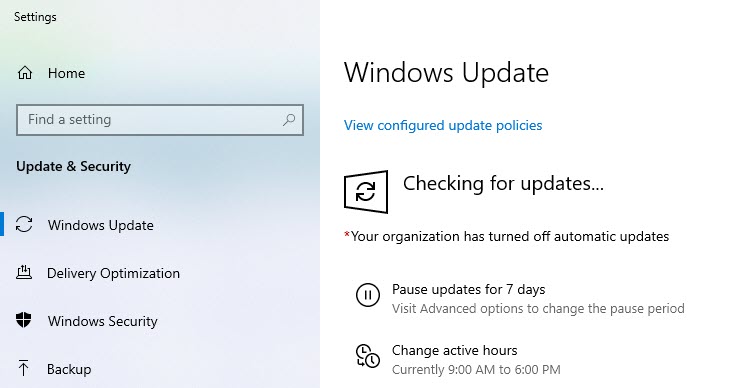
If your Windows updates are not installing or are stuck at downloading, you’ve come to the right place. Many Windows users report similar issues when they’re prompted to install the latest system updates but their PC keeps acting up. We’ve gathered a few working fixes with easy steps, so read on and find out what they are!
Try these fixes…
You don’t have to try them all, just work your way down the list until you find the one that does the trick!
Run Windows Update troubleshooter
Restart Windows Updates services
Fix 1: Clean up your disk space
If you’re updating the entire system, you would need at least 16 GB for a 32-bit OS or 20 GB for a 64-bit OS. If you’re just installing some Windows updates, it still requires enough disk space for the Windows Update client to run smoothly.
When you have low disk space and need to clean it up, you can start with backing up unused large files to somewhere else or deleting them. You can also run the Disk Clean tool to clean up useless data, just double-check if there are any important files before you get rid of them. Here’s how:
- Press the Windows key and R to invoke the Run box.
- Type in cleanmgr and click Enter.
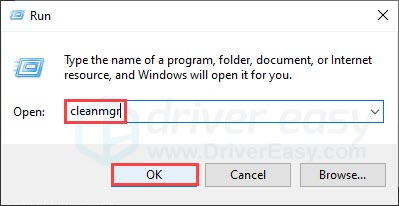
- Select the drive you want to clean up, then click OK.
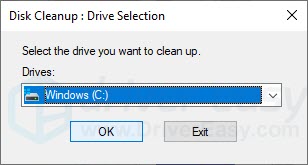
- Tick the checkbox of the items you want to delete, then click OK. Again, make sure you double-check the files before you delete them.
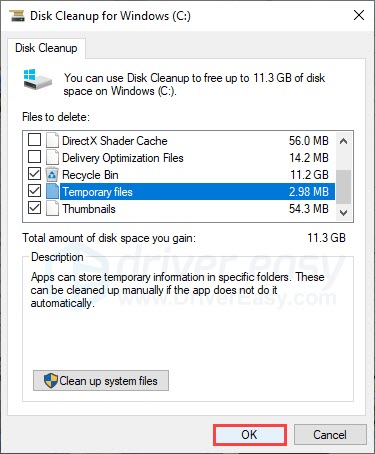
You can try to install your system updates now. If Windows updates still won’t install, try the next fix.
Fix 2: Run Windows Update troubleshooter
If you have enough disk space but Windows updates installation is stuck, you can have Windows diagnose the problem for you. Here’s how to run the Windows Update troubleshooter:
- Press the Windows key and I on your keyboard to open Settings.
- Click Update & Security.
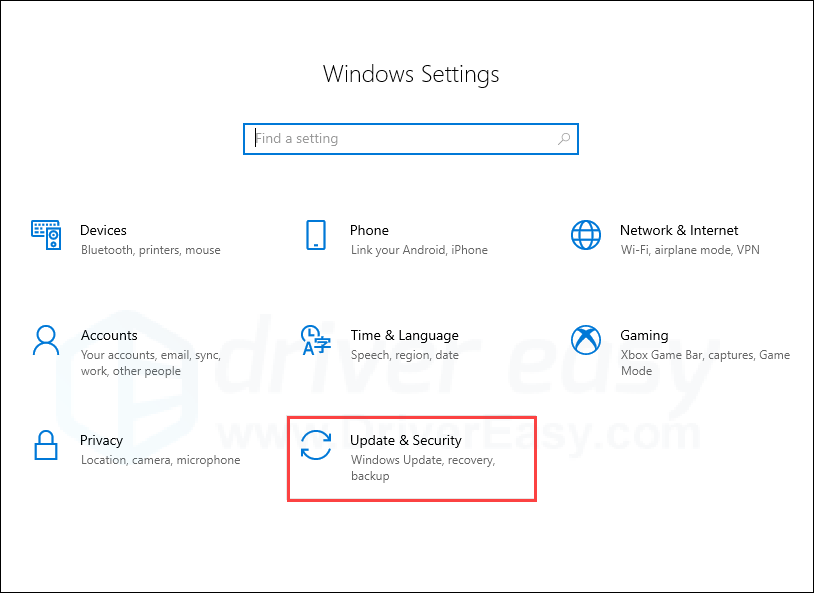
- Click Troubleshooter in the left pane, and click Additional troubleshooters.
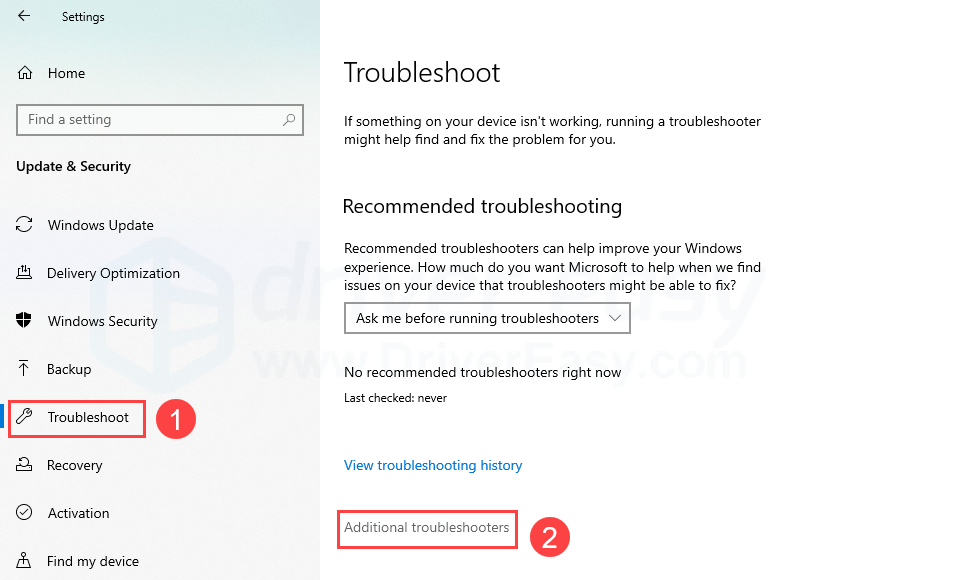
- Select Windows Update, then click Run the troubleshooter.

- Windows will scan your system and detect any problems. If the diagnosis suggests a certain issue, you can follow the instruction to fix it.

Try to re-download or resume the installation of your system updates. If the problem persists, try the next fix.
Fix 3: Repair corrupted system files
When the system files required for the Windows Update client are corrupted, the process of installing the updates may get stuck. In most cases, you can fix system files corruptions by running the system file checker tool (sfc /scannow). Unfortunately, this tool depends on the Windows Updates client as the repair source. This means when your Windows Updates client isn’t functioning normally, sfc /scannow doesn’t help much.
You may need a more powerful tool to repair your system, and we recommend giving Fortect a try. It’s a professional system repair software that can diagnose your Windows problems and fix corrupted system files without affecting your data. It specializes in fixing Windows errors with a large up-to-date database as the repair source.
Here’s how to use Fortect to repair your system files:
- Download and install Fortect.
- Launch Fortect and it will run a free scan of your PC. After the scan is complete, you will be presented with a report displaying the identified issues.
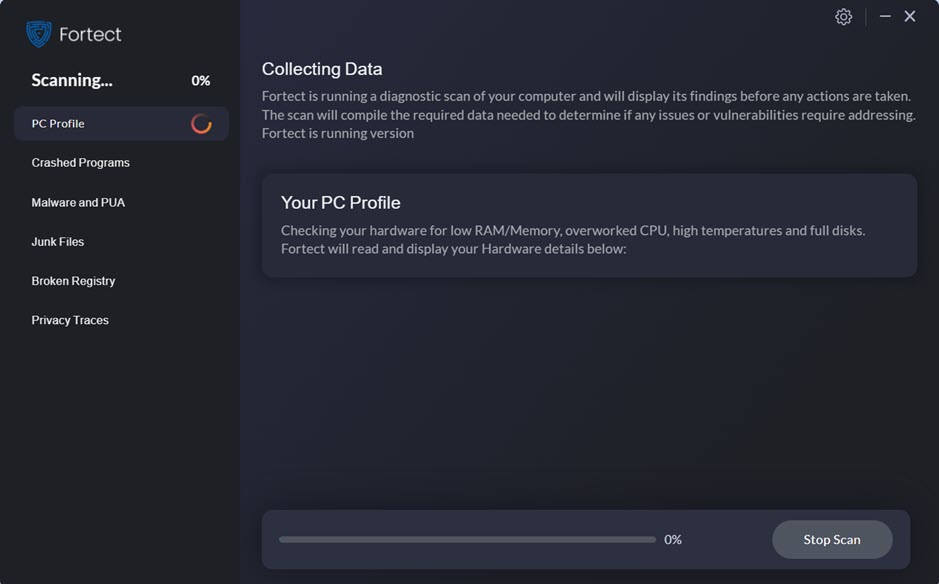
- Click Start Repair to automatically fix all the issues (You’ll need to pay for the full version. It comes with a 60-day money-back guarantee so you can refund anytime if Fortect doesn’t fix your problem).

If this doesn’t solve your problem, try the next fix.
Fix 4: Restart Windows Updates services
When the components of Windows Updates services are corrupted, it can stop your updates from being installed. You can manually reset the Window Updates services via Command Prompt. Below are the explanation and step-to-step guide:
2) Then, we’ll delete the Software Distribution folder in which Windows Updates stores the temporary files. It’s safe to delete this folder because Windows will detect it when it’s missing, then create a new one. In this way, we can solve the problem if it was caused by the temporary files.
3) The last step is to restart the services that we stopped previously.
- In the search bar on your taskbar, type in command prompt, then click Run as administrator. If prompted for permission, click Yes.
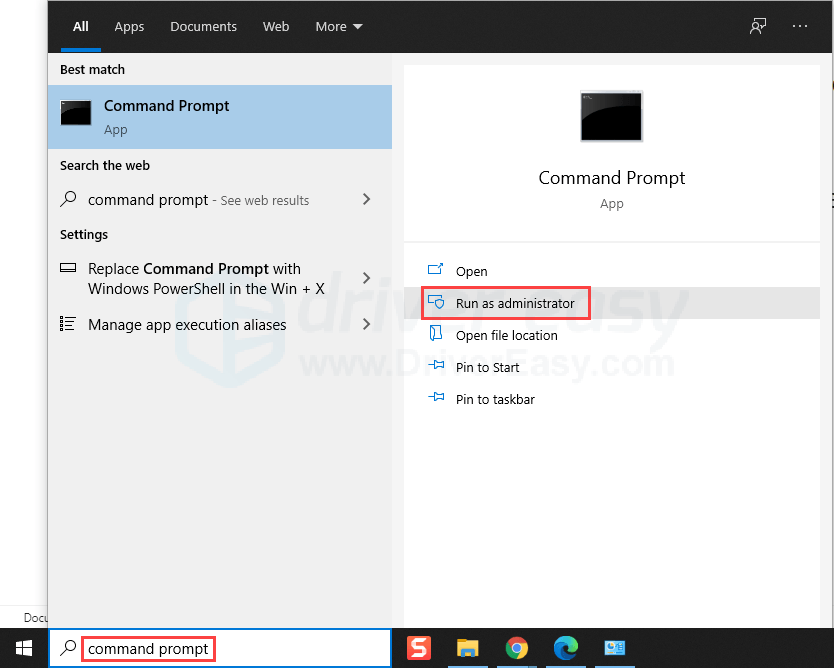
- Copy and paste the following commands into the Command Prompt window. Make sure you do it one at a time, and press Enter for every command to run.
- net stop wuauserv
- net stop bits
- net stop appidsvc
- net stop cryptsvc
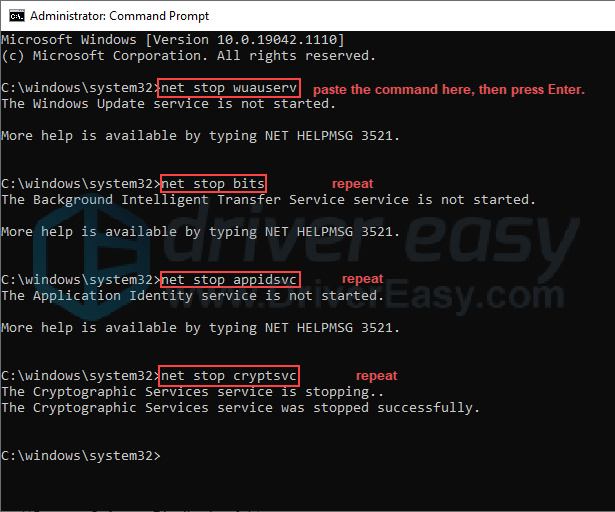
- In the Command Prompt window, copy and paste Ren %systemroot%\SoftwareDistribution SoftwareDistribution.old, then press Enter.
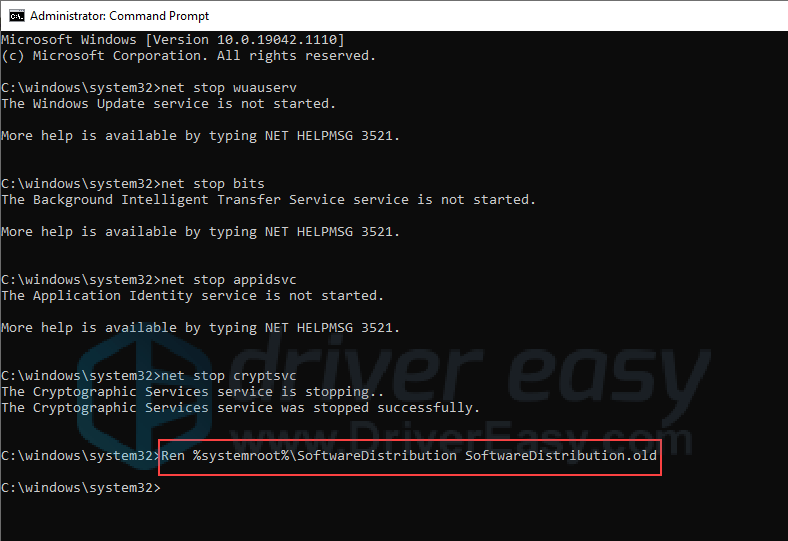
- Copy and paste these command lines one by one in Command Prompt. Press Enter after you paste every single command for it to run.
- net start wuauserv
- net start bits
- net start appidsvc
- net start cryptsvc
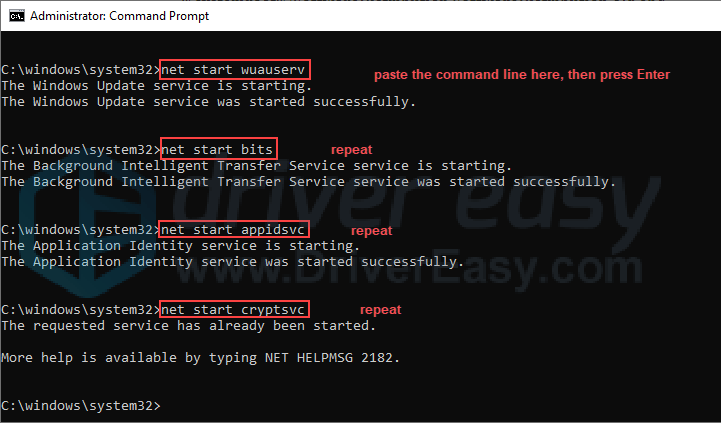
You can now try to resume the download or installation of your Windows updates. If it still doesn’t work, no worries, there’s one more fix you can try.
Fix 5: Update third-party drivers
Microsoft suggests that outdated or faulty third-party drivers could interfere with the Windows Update client. Keeping your device drivers up-to-date can help identify and may solve the random issues you encounter with Windows updates.
Automatic driver update – If you don’t have the time, patience, or computer skills to update your drivers manually, you can do it automatically with Driver Easy. Driver Easy will automatically recognize your system and find the correct drivers for your PC and your Windows version, and it will download and install the drivers correctly:
1) Download and install Driver Easy.
2) Run Driver Easy and click the Scan Now button. Driver Easy will then scan your computer and detect any problem drivers.
3) For example, I want to update my graphics and network adapter driver here. Click the Update button next to the flagged drivers to automatically download the correct version of them. Then you can manually install them (you can do this with the FREE version).
Or click Update All to automatically download and install the correct version of all the drivers that are missing or out of date on your system. (This requires the Pro version which comes with full support and a 30-day money-back guarantee. You’ll be prompted to upgrade when you click Update All.)
Hopefully this article helps! If you have any questions or suggestions, please feel free to drop us a comment down below.





